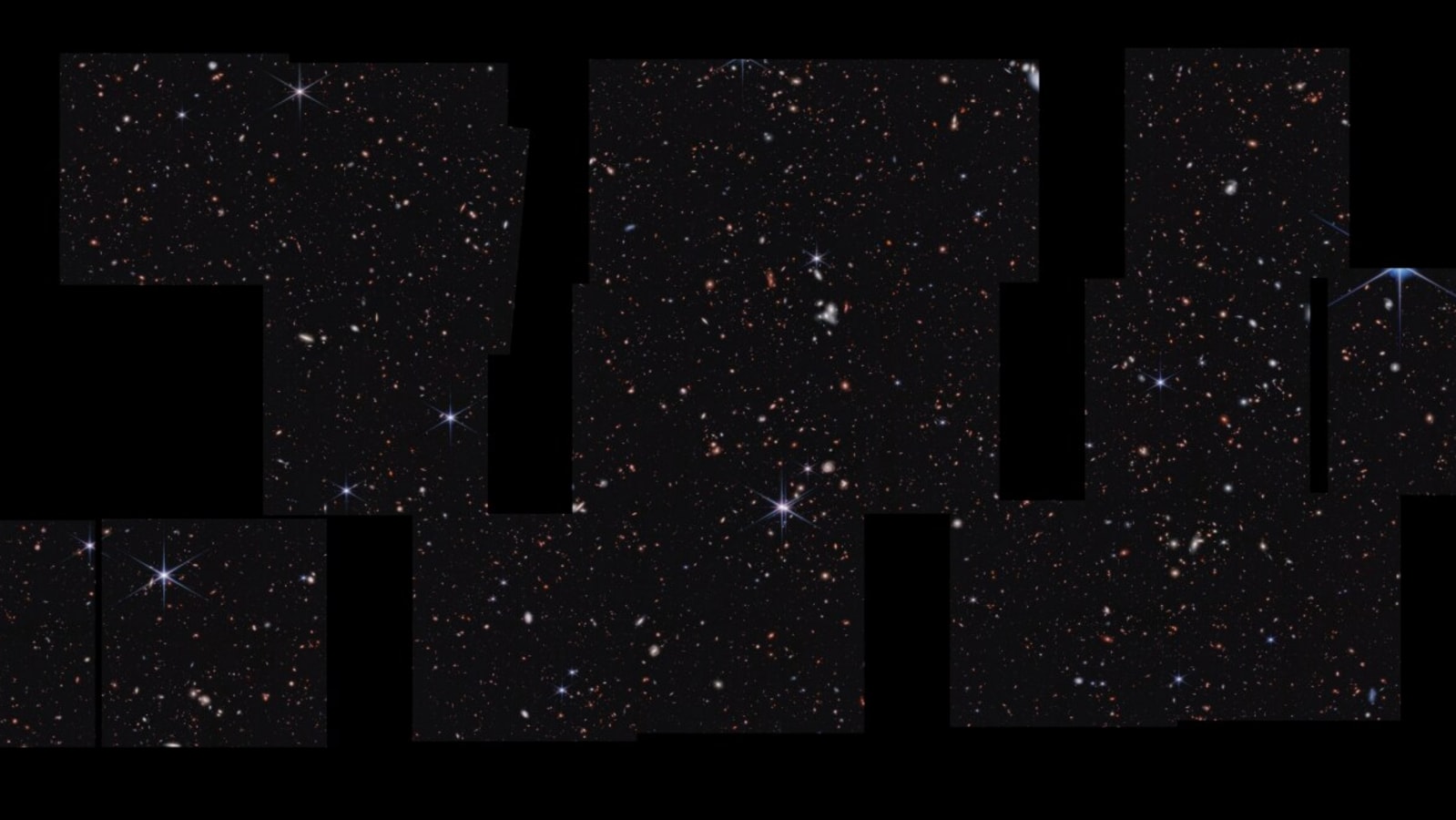
Supermassive black holes are incredibly powerful objects in space that even have the power to hold galaxies together with their strong gravity. They have the ability to destroy anything that comes too close to them. And luckily enough, the James Webb Telescope has discovered the farthest supermassive black hole known so far.
The distances in space are unbelievably huge. According to the University of Texas at Austin, the new supermassive black hole is located at the center of a galaxy called CEERS 1019. Amazingly, this galaxy was formed just 570 million years after the Big Bang. Along with the supermassive black hole, scientists also found two smaller black holes that formed 1 billion and 1.1 billion years after the Big Bang.
CEERS 1019 Significance
CEERS 1019 is not only very old but also surprisingly lightweight compared to other galaxies. In galactic terms, it weighs about 9 million times the mass of our Sun. This is much smaller than other black holes that formed in the early universe and were discovered by telescopes.
Typically, those early black holes are enormous, weighing over a billion times the mass of the Sun. They are easier to detect because their surrounding disks of matter shine very brightly. The black hole in CEERS 1019, on the other hand, is around 4.6 million times the mass of the Sun, similar to the one in the centre of our own Milky Way.
Even though this black hole is relatively small, scientists are shocked at how it formed so soon after the universe began. Earlier theories had it that there would not be a galaxy in that period of time as it takes galaxies billions of years to get created.
Also, the galaxy that hosts the black hole seems to be absorbing as much gas as possible while also producing new stars. Researchers are still trying to understand this phenomenon.
More Very Faraway Black Holes and Galaxies Discovered
The CEERS Survey is vast, and there is much more to explore. Dale Kocevski of Colby College in Maine, one of the team members, rapidly discovered two more little black holes in the data. The first one, located in galaxy CEERS 2782, was easy to identify because there was no dust blocking the view. This allowed researchers to determine that this black hole existed only 1.1 billion years after the Big Bang. One billion years after the great bang, the second black hole in the galaxy CEERS 746 existed. Although the central black hole is visible, there is some dust clouding its bright accretion disk, which is a ring of gas and dust surrounding the supermassive black hole. Kocevski explained that the presence of dust suggests that the galaxy might be producing stars at a rapid pace.
https://news.google.com/rss/articles/CBMikAFodHRwczovL3RlY2guaGluZHVzdGFudGltZXMuY29tL3RlY2gvbmV3cy9taXJhY2xlLWZpbmQtamFtZXMtd2ViYi10ZWxlc2NvcGUtZGlzY292ZXJzLWZhcnRoZXN0LWtub3duLXN1cGVybWFzc2l2ZS1ibGFjay1ob2xlLTcxNjg4NzQ3NTMyOTE3Lmh0bWzSAZQBaHR0cHM6Ly90ZWNoLmhpbmR1c3RhbnRpbWVzLmNvbS9hbXAvdGVjaC9uZXdzL21pcmFjbGUtZmluZC1qYW1lcy13ZWJiLXRlbGVzY29wZS1kaXNjb3ZlcnMtZmFydGhlc3Qta25vd24tc3VwZXJtYXNzaXZlLWJsYWNrLWhvbGUtNzE2ODg3NDc1MzI5MTcuaHRtbA?oc=5
2023-07-07 16:38:09Z
2216754423
Tidak ada komentar:
Posting Komentar